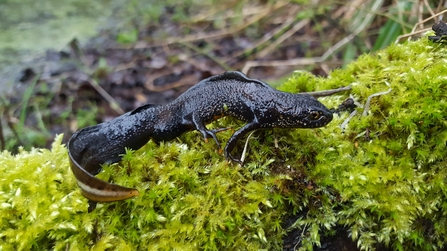All these new homes will need planning permission of course, and to ensure that nothing gets in the way of their goal, the Government is pushing a new Planning and Infrastructure Bill through Parliament at speed.
The Bill proposes sweeping changes to England’s planning system, in a bid to ramp up the pace of development. Regrettably, those in power believe that the building of new homes is being impeded by laws protecting our environment and threatened species, and are proposing legislative changes within the Bill to allow developers to sidestep their environmental obligations.
But new data (published last week1) shows that nature is not blocking development, with bats and great crested newts being a factor in just 3% of planning appeal decisions. The research adds to the growing body of evidence – including the Government’s own impact assessment2 – showing that nature protections do not block growth.





